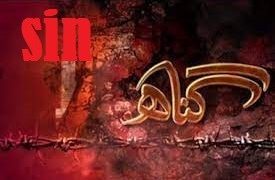Contrary to their actions, the Baha’i leaders have emphasized on the illegitimacy of dissimulation in Baha’ism. The Baha’i proselytizers have reminded of building Bab’s tomb by Abdul Baha as a document for the lack of dissimulation by their leaders to justify this binary behavior; while the tomb has been built by Shoqi Effendi and there are unavoidable documents regarding the dissimulation of the Baha’i leaders.
The Baha’ism cult leaders have emphasized on the illegitimacy and the prohibition of belief in Baha’ism creed.[1] While by studying the Baha’i leaders’ character sketches, we will figure out that they have repressed their forged commandment.

Consequently, this issue caused for this divisive behavior to be obstructed. Thus, the Baha’i proselytizers have reminded building Ali Muhammad Bab’s tomb by Abdul Baha as a document for the lack of dissimulation of belief by the Baha’i leaders in the site related to Baha’ism organization. However, it is interesting to be noted that the attributed tomb has been built by Shoqi Effendi (after Palestine had been captured and occupied by England)[2]. Because by Abdul Baha’s dissimulation; when the Ottoman Muslim government dominated on the region, building Ali Muhammad Shirazi’s tomb as the claimant of abolishing Islam has been practically impossible.
Also, the Baha’i sources have said about Abdul Baha’s presence at group prayers by Muslims by the end of his life[3] while the Baha’i leaders have abolished the prayer of Islam and have assumed group prayer as illegitimate.[4]
[۱] Refer to Abdul Hamid Ishraq Khawari, the treasury of limitations and commandments, the electronic copy, pp. 456-459.
[۲] Refer to Shoqi Rouhani, Bahaullah and Kermel, translated by Hediyeh Khosh Aeen, the electronic copy (1st edition), p. 193 on.
[۳] Refer to Shoqi Effendi, Badi’a century, translated by Nasrullah Mawaddat, the electronic copy, Vol. 3, p. 318; J.E, Esslement, Bahaullah and the new era, Manshurat Dal-Al-Nashr Al-Bahaiah Fi Al-Berazil: translated by: A. Bashirullahi, H. Rahimi, F. Soleymani, 1988 A.D. p. 78.
[۴] Refer to Hussein Ali Nouri, the Aqdas, Bija: Bita. (180 pages), p. 12.






